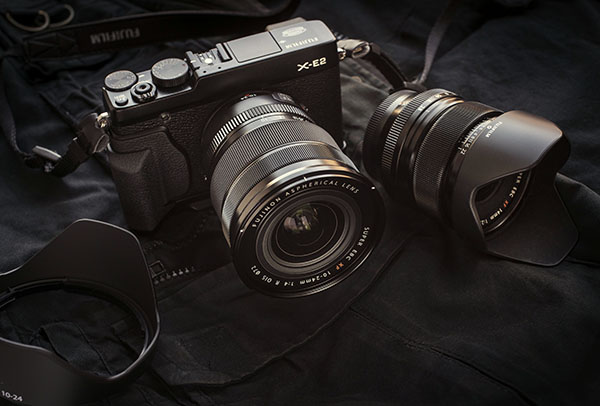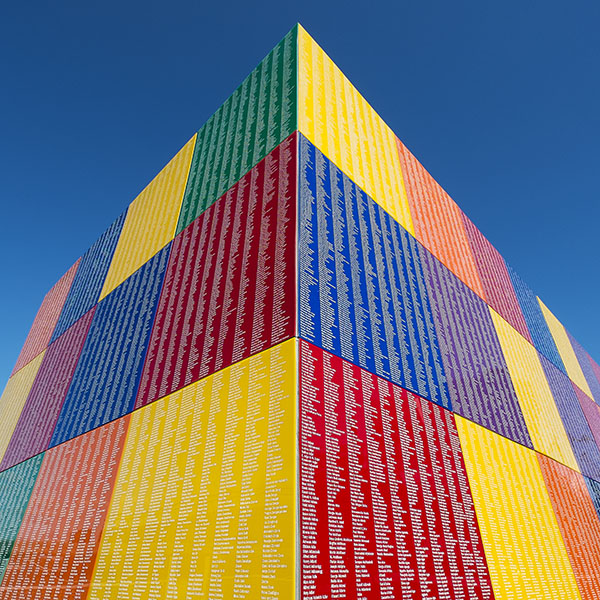I call this a "Debriefing review" to differentiate it from my regular "hands on" reviews, which are based on normal use tests I do for about a week with a new piece of camera equipment. For this debriefing review I put the camera, in this case a Fuji X-T1, through a specific shooting event to gauge its handling characteristics under fire. Since it came out, I have suspected that the X-T1 might be the first mirrorless camera capable of dealing with the demands of a fast paced lifestyle shoot, and I set out to see if my suspicion was true.
I was in Florida where we arranged to have two models meet us on a beach just after sunrise for a three hour shoot. The watch-word for the shoot was "energy". We wanted the models to me very active and bursting with enthusiasm. This meant keeping both the models and I me in constant motion, and necessitated a camera capable of executing very fast, continuous focus adjustments at mostly open apertures. To put even more technical stress on the situation, I decided to shoot using very intense back lighting with no fill whatsoever, save for what was provided naturally by the sandy beach. I wanted a very light and airy, blasted out look to the scene. I needed a camera that could handle such an extensive dynamic range.

Typically, in a shoot like this I would use a Nikon D4 and f/2.8 zooms. We did have a D4 outfit with us just in case things went wrong with the X-T1. I can tell you up front that I never once felt a need to switch over to the Nikon system. I did the entire shoot with the Fuji X-T1, ending up with over 2100 RAW images for later editing.
I used four Fuji lenses: The 18-55mm was my main working lens, followed by the 55-200mm zoom. For portraits I switched to the 56mm f/1.2, and in one situation needed the 14mm.

Auto-focus was my biggest worry going into the shoot, but the X-T1 held its own, returning an extremely high ratio of focused images despite the back light, and despite the 8fps continuous shooting speed. My first SD card was a new high-speed Sandisk UHS-II, and it made a difference. I could tell immediately after I filled the 32GB card and had to switch to a slower UHS-I. No question I will be picking up some more of the faster cards.
Color balance with the X-T1 was right on, although it might not be readily apparent from looking at the shots. I was using early morning light and pushing it to the warmer side in post-processing.
 |
| The models repeated this running scene coming towards me about a half dozen time to insure I had focus. I needn't have worried. The X-T1 returned as many in focus shots as I would expect from the D4, which I consider to be the king of auto-focus. |
I had many scenes where the action was changing rapidly and I had to keep the camera shooting at a fast clip to capture a spontaneous moment. I doubt this would be possible with any other EVF (electronic view finder). Their refresh rates have been just too slow. The EVF in the X-T1 is a world apart from any other out there, and fully capable of keeping up with the action. Without this EVF I doubt that a lifestyle shoot like this would even have been possible.
One thing I really grew to love was the tilting screen. This feature made it so much easier to get the camera really low to the sand for shots like the the two below. I get really nervous working on sand with cameras. It takes so little sand to ruin a lens or camera so I try never to touch the sand myself because I don't want to get any on my hands to transfer to the equipment. With the tilt screen I was able to hold the camera low while still maintaining a good distance above the sand.
 |
| One of the few beach scenes I did with a front light, but still no reflector fill. Just let the camera's natural dynamic range cover the full exposure. |

For the shot below done after the beach shoot, I had the 14mm lens on the camera and held it high above the models while composing and shooting with the tilt screen.
A feature I enjoyed in post-processing with the new RAW release candidate for Adobe Bridge, was having the Fujifilm film profiles available. I found it convenient switching an image to one of the profiles -- Provia, Velvia, or Astia -- and tweaking the colors and contrast from there. Saved me a lot of time.
 |
| Really nice background bokeh was achieved by using the 56mm lens at a wide open aperture for all the portrait shots. |
Almost all the scenes had a blasted out background and highlights, but that was the look I wanted. It takes a really good, modern digital camera to deliver a wide enough dynamic range to shoot like this without loosing too much detail. The X-T1 delivered.
Everything was shot in manual exposure mode at ISO 200. There were quite a few times I found myself wishing Fuji had given its X cameras a base ISO of 100 instead. Sure would have made it a lot easier shooting with open apertures on a bright day like this.
I used the VG-XT1 vertical battery grip on the camera to provide extra power and better handling. I have to say, this accessory is a real winner. It makes the camera so much more comfortable to handle in a fast moving situation.
A real surprise was how long the battery lasted. According to the Fuji specs, we should expect around 350 shots per charge. I shot over 2100 RAW images throughout the day and only used up part of the one battery that was in the accessory battery grip. Seems unusually frugal to me, but I'm not going to complain. Some day I am going to have to find out just how long I can make two batteries last.
For close-up portraits I switched to the 56mm f/1.2 lens. I wanted to use it wide open, or not more than f/2, so I needed to put a 3-stop neutral density filter on the lens to cut down the exposure.
 |
| This close-up was taken with the 56mm at f/1.8. |
My one major beef with the X-T1 was with the focus buttons. They are just too small, making them hard to hit without looking. I found myself constantly having to take my eye away from the viewfinder to look at the focus wheel directly in order to find the buttons. This is something Fuji is going to have to address in a future version of this camera. Perhaps over time I will get used to them as they are. Perhaps my thumbs are just too big for such a tiny camera. In the meantime, it is annoying and really slows me down. One possible solution I am trying is to add the AF-Focus Area function to the Fn1 button on the front of the camera because it is easier to find and press.
 |
| Another portrait done with the 56mm lens set to f/1.6. The model's eyes are tack sharp. |
I mentioned in my initial review of the X-T1 that I thought it might be the first mirrorless camera to truly move to a usable level on a par with a pro-DSLR, and I was curious to try it as my only camera during a lifestyle shoot. It was a real pleasure to work with such a small outfit. I was able to work entirely out of my photography vest for the entire shoot.
The real test of the day's experience is whether or not I will choose to shoot with the X-T1 outfit again. I can answer that with a resounding "Yes". The camera and lenses were spot on, with the results as good as any camera system I have used for this type of shooting. The convenience of such a portable system delivering such excellent results is just too enticing to give up. Plus, the new fast aperture zooms Fuji has coming down the pike are only going to make this system even better.
If you are planning on purchasing this camera, you can help support this site at no extra cost to you by purchasing from one of our affiliate sellers listed below and thanks for your support :
- The Fujifilm X-T1 camera body only is available at: Amazon - The Fujifilm X-T1 with 18-55mm lens is available at: Amazon 






























































